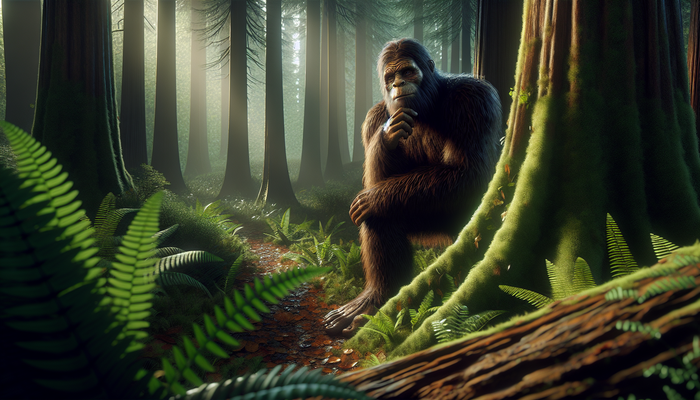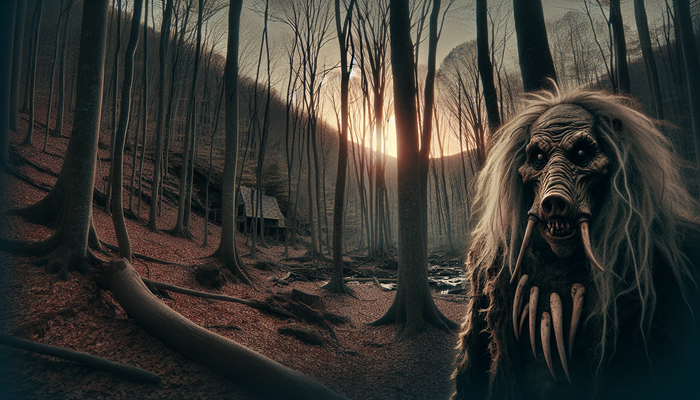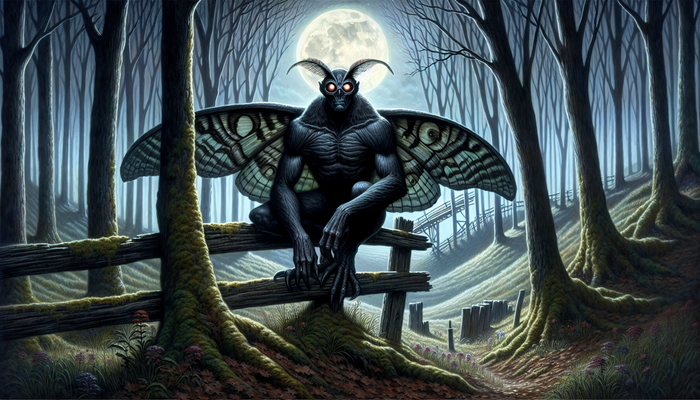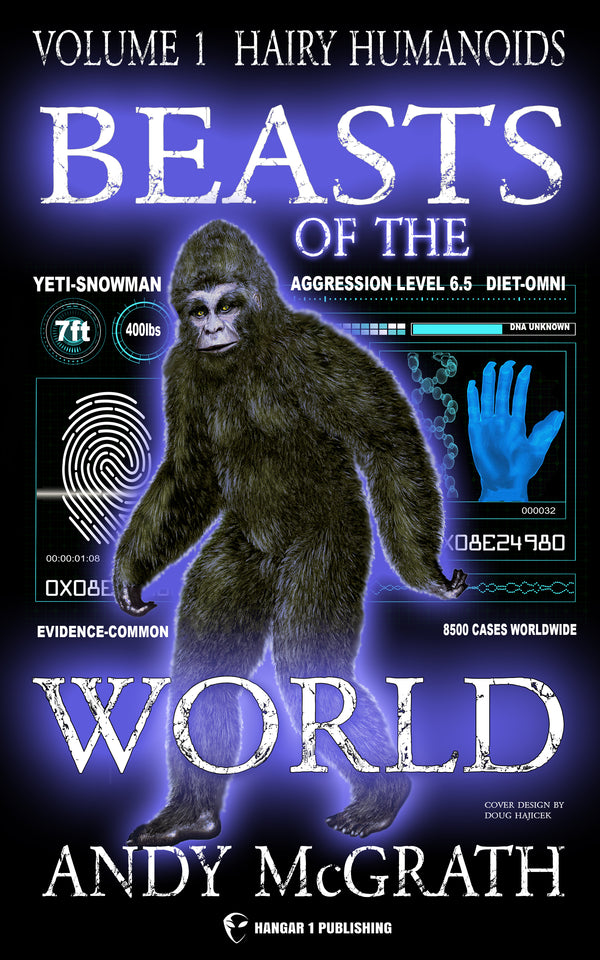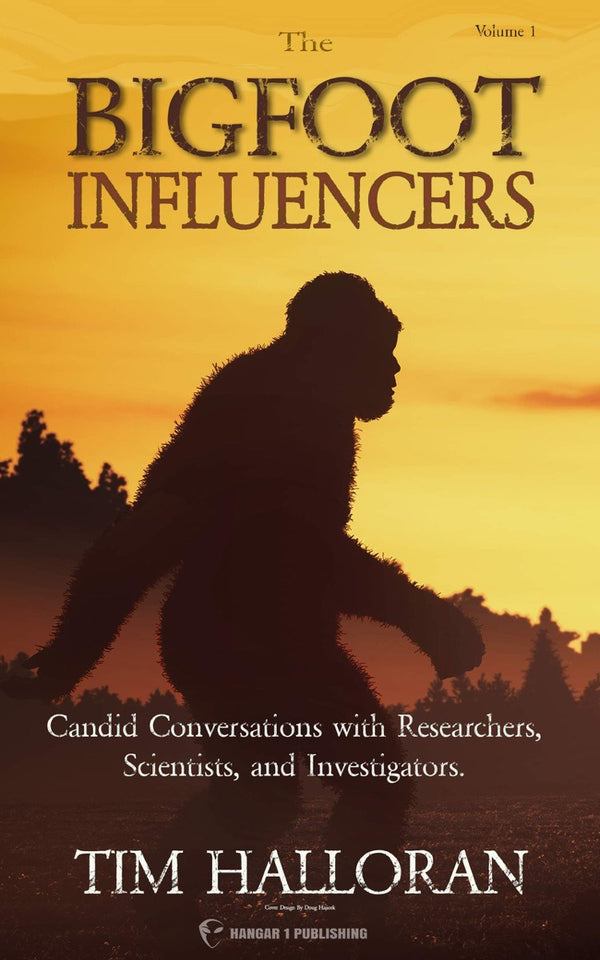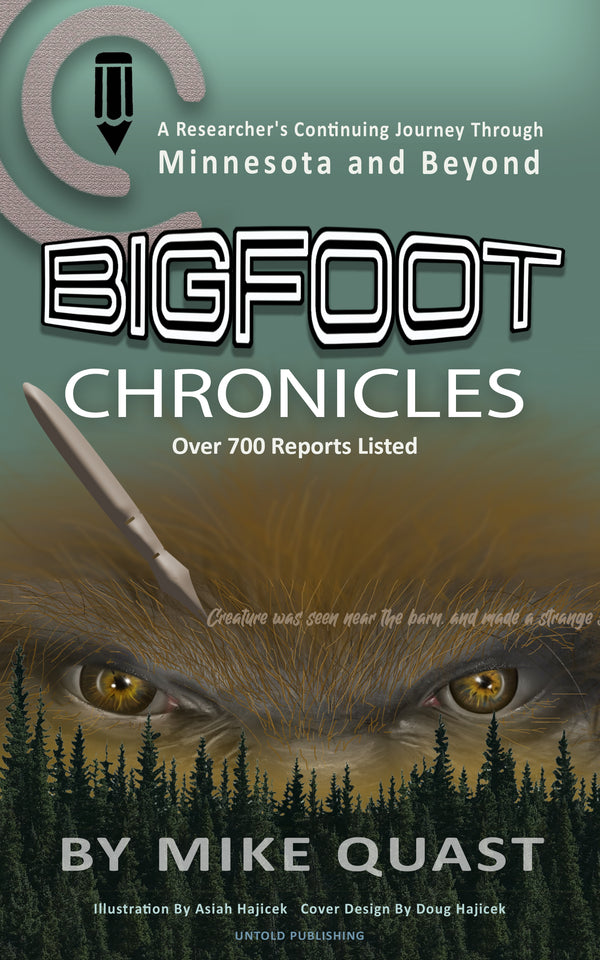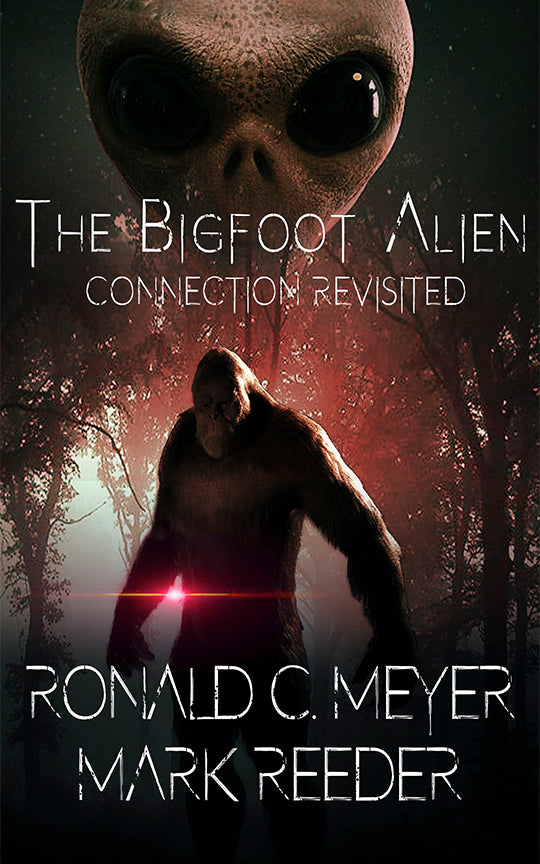Uncovering the Truth Behind the 'Bigfoot War of 1855'
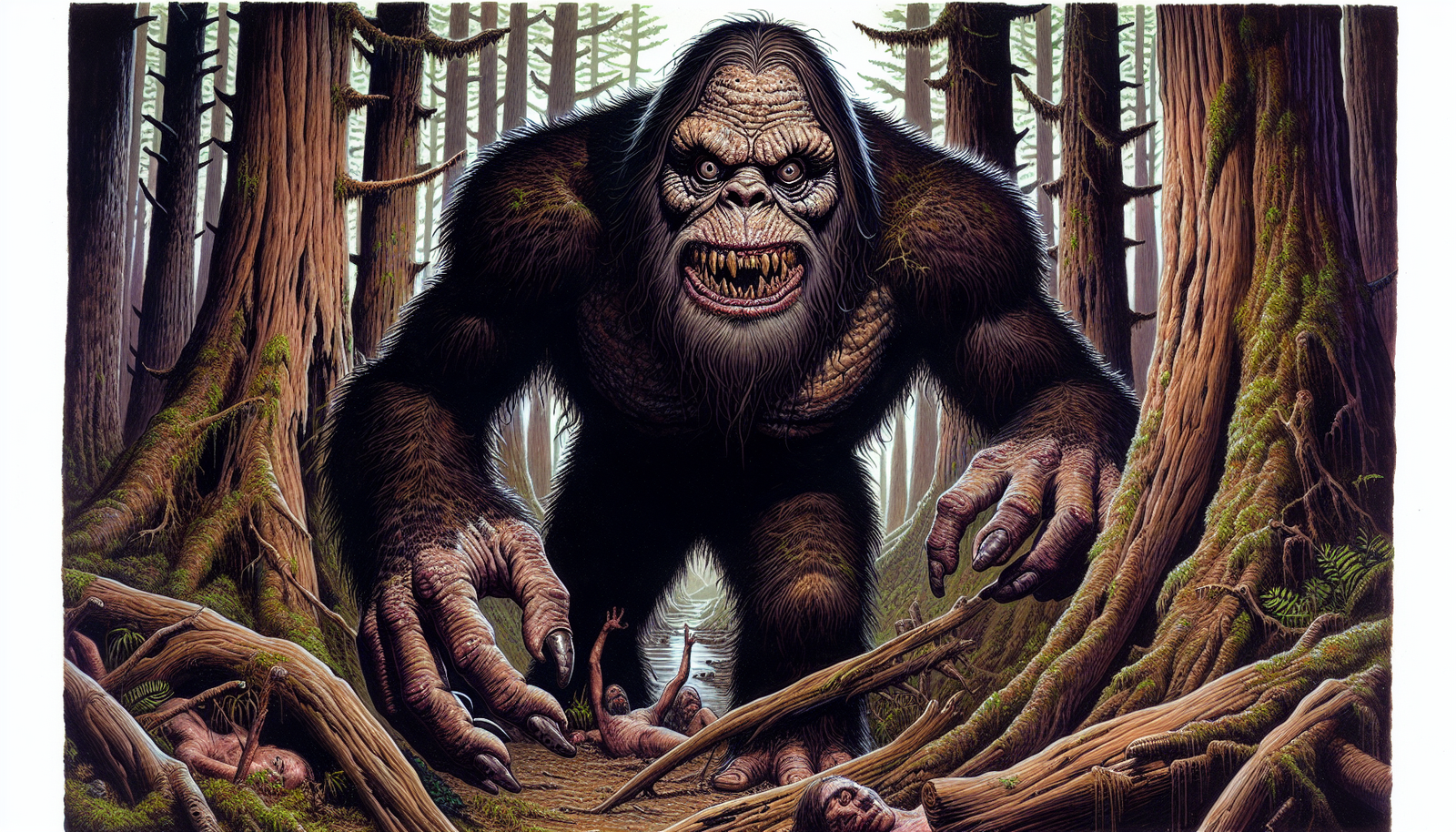
By Oliver Bennett, Cryptozoologist
In the annals of American folklore, few creatures have captured the public's imagination quite like Bigfoot. This elusive, ape-like being, said to roam the dense forests and rugged mountains of North America, has been the subject of countless stories, sightings, and debates. Yet, amidst the myriad tales surrounding this cryptid, one in particular stands out for its unique historical context and cultural significance: the little-known legend of the 'Bigfoot War of 1855', which allegedly pitted the proud Choctaw Nation against a group of monstrous, hairy beasts in what is now LeFlore County, Oklahoma.
As a researcher and historian with a deep fascination for the unexplained, I have long been intrigued by this obscure chapter in Bigfoot lore. The story, with its blend of Native American history, frontier violence, and cryptozoological mystery, seems to encapsulate the very essence of the Bigfoot phenomenon – a tantalizing glimpse into a world where the boundaries between myth and reality blur. In this article, I aim to delve deep into the legend of the Choctaw's clash with Bigfoot, examining the historical evidence, cultural context, and enduring significance of this remarkable tale. Through meticulous research and analysis, I hope to shed light on the truth behind the 'Bigfoot War of 1855' and explore what this story can tell us about the Choctaw people, the American frontier, and our enduring fascination with the unknown.
The Choctaw Nation: A Proud Warrior Culture
To fully appreciate the significance of the 'Bigfoot War' legend, it is essential to understand the rich history and traditions of the Choctaw Nation. The Choctaw, a Native American tribe originally inhabiting the southeastern United States, were renowned for their prowess as warriors and hunters. Their skills on the battlefield were honed through centuries of inter-tribal conflicts and, later, through their participation in colonial-era wars and the American Revolutionary War.
The Choctaw were known for their sophisticated military organization, with a well-defined system of ranks and a strong emphasis on discipline and strategy. Their warriors were trained from a young age in the arts of tracking, stealth, and hand-to-hand combat, making them formidable adversaries in the dense forests and swamps of their homeland. This martial tradition was deeply ingrained in Choctaw culture, with bravery and military success being highly valued and celebrated.
However, the Choctaw's way of life was forever altered in the 1830s, when the United States government, under the Indian Removal Act, forcibly relocated the tribe from their ancestral lands to present-day Oklahoma. This traumatic event, known as the Trail of Tears, saw thousands of Choctaw men, women, and children make the arduous journey westward, facing disease, starvation, and exposure along the way. It is estimated that nearly a quarter of the Choctaw population perished during this forced migration.
For the Choctaw who survived the Trail of Tears, the challenges of adapting to life in a new and unfamiliar land were immense. Stripped of their traditional hunting grounds and resources, the tribe struggled to maintain their cultural identity and traditions in the face of overwhelming adversity. Yet, despite these hardships, the Choctaw persevered, drawing upon their ancient warrior spirit to forge a new existence in the Oklahoma Territory.
It was against this backdrop of upheaval and resilience that the legend of the 'Bigfoot War' would emerge – a tale that, in many ways, reflects the Choctaw's ongoing struggle to assert their identity and protect their people in a rapidly changing world.
The Setting: LeFlore County, Oklahoma in 1855
The story of the 'Bigfoot War' is inextricably linked to the specific time and place in which it is said to have occurred: the Choctaw territory of LeFlore County, Oklahoma, in the year 1855. To understand the context of this legendary encounter, it is important to examine the state of the Choctaw Nation and the broader region during this period.
By the mid-19th century, the Choctaw had been living in their new Oklahoma homeland for over two decades. Despite the initial hardships of relocation, the tribe had managed to establish a degree of stability and self-governance in their territory. The Choctaw Nation had its own constitution, elected officials, and a system of laws and courts. However, the specter of American expansion and the increasing pressure to assimilate into white society loomed large over the tribe.
LeFlore County, named after the prominent Choctaw family of the same name, was a microcosm of the challenges and opportunities faced by the tribe during this era. The LeFlores, who were of mixed Choctaw and French descent, had long played a significant role in the tribe's political and economic affairs. Their influence and leadership helped to bridge the gap between the Choctaw and the encroaching American settlers, but also highlighted the complex and often fraught nature of these cross-cultural interactions.
It was in this context of change and uncertainty that the mysterious raids on Choctaw settlements and local farms began to occur. According to the legend, unknown assailants were stealing livestock, crops, and other resources from the tribe and their neighbors, sowing fear and unrest throughout the region. Even more disturbing were the reports of women and children being kidnapped from their homes, vanishing into the wilderness without a trace.
These attacks, which seemed to defy explanation, struck at the very heart of the Choctaw's sense of security and autonomy. For a people who had already endured so much trauma and displacement, the idea of an unseen enemy preying upon their communities was deeply unsettling. As the raids continued and the toll of the missing and stolen mounted, the Choctaw knew that they had to take action to protect their people and their way of life.
The Choctaw Response: Assembling the Lighthorsemen
Faced with the growing threat of the mysterious raids, the Choctaw leadership knew that they needed to mount a swift and decisive response. Drawing upon their ancient warrior traditions, they assembled an elite group of fighters known as the Lighthorsemen to track down and confront the raiders.
The Lighthorsemen were the Choctaw Nation's premier military force, a band of skilled warriors and trackers who were tasked with maintaining law and order within the tribe's territory. These men were chosen for their bravery, strength, and expertise in the ways of the wilderness, and were held in high esteem by their fellow Choctaw.
Leading the Lighthorsemen in their mission was Joshua LeFlore, a respected figure within the tribe known for his wisdom, courage, and diplomatic skills. LeFlore, who was of mixed Choctaw and French ancestry, embodied the complex and often conflicting identities of the Choctaw people in the face of American expansion. His leadership of the Lighthorsemen was a testament to his commitment to protecting his people and preserving their way of life.
Alongside LeFlore were the legendary Tubbee warriors, a family of giant men known for their incredible size, strength, and fighting prowess. Standing at nearly seven feet tall and weighing over 300 pounds each, the Tubbee clan were an imposing presence on the battlefield and were feared and respected in equal measure by their enemies.
Together, this formidable group of warriors set out from the Choctaw capital of Tuskahoma, determined to put an end to the raids and bring the perpetrators to justice. Armed with their traditional weapons and an unshakable resolve, they rode out into the wilderness of the McCurtain County Wilderness Area, following the trail of the elusive enemy.
As they ventured deeper into the forest, the Lighthorsemen encountered signs of the raiders' presence – abandoned campsites, broken branches, and the occasional footprint or scrap of cloth. However, the true nature of their foe remained a mystery, hidden somewhere in the dense undergrowth and rugged terrain.
Little did the Choctaw warriors know that they were about to face an adversary unlike any they had ever encountered before – one that would test their courage, their skills, and their very understanding of the world around them.
The Confrontation: Clash with the Monstrous Creatures
As the Lighthorsemen rode deeper into the wilderness, the signs of their quarry's presence grew more ominous. The once vibrant forest seemed to grow quieter with each passing mile, as if even the birds and beasts were aware of some unseen danger lurking in the shadows. Then, without warning, the warriors were assaulted by a stench so overpowering that it nearly knocked them from their horses – the unmistakable odor of death and decay.
Pressing onward, the Choctaw soon found themselves in a small clearing, where the source of the horrific smell was immediately apparent. Strewn about the forest floor were the partially devoured remains of dozens of women and children, their bodies twisted and broken in a grotesque tableau of violence and savagery. Among the grisly scene, three enormous, hair-covered creatures were crouched over the corpses, their muzzles stained with blood and viscera.
The sight of these monstrous beings, which seemed to combine the worst aspects of man and beast, sent a wave of shock and revulsion through the Lighthorsemen. For a moment, even the bravest among them hesitated, struggling to comprehend the sheer wrongness of the creatures before them. But as the initial shock wore off, it was replaced by a burning rage – a primal urge to avenge the innocent and purge the land of this abomination.
With a fierce cry, Joshua LeFlore spurred his horse forward, drawing his pistol and saber as he charged toward the nearest creature. The beast, caught off guard by the sudden attack, barely had time to react before LeFlore was upon it, his blade flashing in the dappled sunlight. But even as the Choctaw leader rained blows upon the monster, it seemed to shrug off the wounds with terrifying ease, its hide as tough as oak bark.
Suddenly, a second creature lunged from the shadows, its massive hand swatting LeFlore's horse to the ground with a sickening crunch. The warrior tumbled to the forest floor, dazed but unbroken, and immediately rolled to his feet to face his attacker. With a roar of defiance, LeFlore emptied his pistol into the beast's chest, the rounds tearing through flesh and bone. But still, the creature came on, its eyes blazing with a feral hunger.
As LeFlore and the creature grappled in a desperate hand-to-hand struggle, the rest of the Lighthorsemen finally sprang into action. The Tubbee warriors, armed with their massive 50-caliber Sharp's buffalo rifles, took aim at the remaining beasts, their shots echoing through the forest like thunder. One by one, the creatures fell, their bodies riddled with gaping wounds.
But the victory was short-lived. To the Choctaw's horror, the creature battling LeFlore suddenly lunged forward, its powerful jaws clamping down on the warrior's head and twisting violently. With a sickening crack, LeFlore's lifeless body crumpled to the ground, his head torn clean from his shoulders.
Enraged by the loss of their leader, the Tubbee clan redoubled their efforts, pouring a relentless barrage of fire into the remaining creature. Finally, the beast staggered and fell, its massive bulk crashing to the forest floor in a cloud of leaves and blood.
As the echoes of the battle faded, the Lighthorsemen stood in stunned silence, their minds reeling from the sheer horror of what they had just witnessed. The creatures, whatever they were, had been unlike anything they had ever seen or heard of before – a nightmarish blend of animal savagery and human cunning. And yet, even in death, the beasts seemed to exude an aura of malevolence, as if their very presence was a violation of the natural order.
Gathering their fallen leader's remains, the Choctaw set about the grim task of burying the dead and burning the creatures' bodies on a massive pyre. As the flames consumed the monsters' flesh, the warriors could not shake the feeling that they had just brushed against something ancient and unknowable – a darkness that had always lurked at the edges of their world, waiting for its chance to strike.
The Aftermath: Burial, Mourning, and Enduring Nightmares
In the days and weeks that followed the fateful battle, the Choctaw Nation was plunged into a state of mourning and unease. The loss of Joshua LeFlore, one of their most respected and beloved leaders, was a blow that struck at the very heart of the tribe. The Lighthorsemen, too, were deeply affected by the trauma of the encounter, with many of the warriors, particularly the Tubbee clan, reporting vivid and terrifying nightmares of the creatures they had faced.
As news of the incident spread throughout the region, the Choctaw found themselves grappling with a new and unsettling reality. The creatures they had encountered, which seemed to defy all known laws of nature, had shaken their understanding of the world and their place within it. Some spoke of ancient legends and dark omens, while others whispered of curses and malevolent spirits. But all agreed that the 'Bigfoot War', as it came to be known, marked a turning point in the tribe's history – a moment when the veil between the natural and the supernatural had been torn asunder.
In the years that followed, the Choctaw would continue to face challenges and hardships, from the encroachment of American settlers to the ravages of disease and poverty. But through it all, the memory of the 'Bigfoot War' endured, a testament to the tribe's resilience and the enduring power of their warrior spirit. For the Tubbee clan and the other survivors of the battle, the scars of that fateful day would never fully heal, a constant reminder of the darkness that lurked just beyond the edge of the firelight.
Examining the Historical Evidence
As a historian and researcher, one of the most challenging aspects of investigating the 'Bigfoot War' legend is the lack of concrete historical evidence to support the story. Despite the tale's enduring popularity and cultural significance, there are no known contemporary accounts, official records, or newspaper reports that directly corroborate the events described in the legend.
This absence of documentation is not entirely surprising, given the time period and the remote location in which the alleged incident took place. In the mid-19th century, the American frontier was a vast and sparsely populated region, with few established channels for disseminating information or preserving historical records. Moreover, the Choctaw Nation, like many Native American tribes, relied primarily on oral tradition to pass down their history and culture, rather than written accounts.
However, the lack of direct evidence does not necessarily mean that the 'Bigfoot War' story is entirely fictitious. It is possible that the legend, like many other tales from the American frontier, may have been inspired by real events that were later embellished or distorted through the lens of folklore and oral tradition.
One potential clue to the story's origins lies in the historical existence of the LeFlore family and the Tubbee clan, both of whom are prominently featured in the legend. The LeFlores, as mentioned earlier, were a influential mixed-blood Choctaw family who played a significant role in the tribe's political and economic affairs during the 19th century. The fact that the county in which the alleged incident took place is named after this family suggests that they were indeed a prominent presence in the region during this time period.
From Bigfoot to UFOs: Hangar 1 Publishing Has You Covered!
Explore Untold Stories: Venture into the world of UFOs, cryptids, Bigfoot, and beyond. Every story is a journey into the extraordinary.
Immersive Book Technology: Experience real videos, sights, and sounds within our books. Its not just reading; its an adventure.



